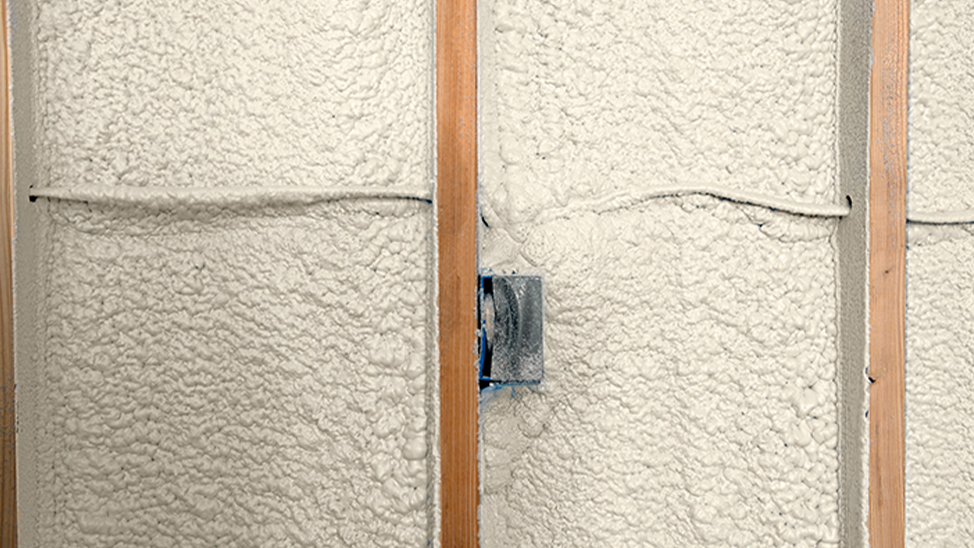On construction sites, there is ever-increasing pressure to improve efficiencies and meet tighter and tighter deadlines. This pressure is exacerbated by the growing shortage of skilled labor in the construction industry. These two variables have led to the introduction of a number of practices and products designed to help improve jobsite efficiencies and expedite the overall construction process.
Concerning efficiency, spray foam has historically had one minor weakness: it often needs to be installed in passes (layers) that require approximately 30 minutes of wait time between each pass to allow the foam to sufficiently cool. For many types of spray foam, this cooling process is critical to ensuring that the foam or the substrate don’t ignite as a result of excess temperature buildup in the foam. Additionally, this multiple-pass application method helps ensure the foam’s physical properties and performance characteristics aren’t compromised as a result of being sprayed too thickly in a single layer. Despite the commonly required wait time, spray foam offers one of the best R-values per inch (between R6 and R7 depending on the brand), making it an attractive option for many building designers.
Recognizing that this wait time can be a challenge for many jobsites, we recently conducted research at the Johns Manville Technical Center to identify an installation method for JM’s Corbond® III closed cell spray foam that would establish the maximum thicknesses Corbond III could be sprayed in immediate passes. This study was designed to determine how installers could use Corbond III to safely remove the wait time between passes, optimizing installation time without compromising the physical properties, performance characteristic, or safety.
The research found that JM’s Corbond III spray foam can be sprayed in immediate passes up to a total thickness of 7 inches. This allows installers to achieve up to an R-49 in a fraction of the time it would take for other foams that require cooling time between passes. The table below identifies how thick each immediate pass (layer) should be based on final thickness the installer wishes to achieve. For example, while Corbond III can be safely applied in a single lift (layer) of up to 4 inches without damaging the physical properties of the foam, achieving 7 inches of total foam thickness requires four, immediate passes of 1.75 inches a piece.

After being applied at these thicknesses, the Corbond III samples were each carefully examined and tested to ensure their physical and performance characteristics remained unchanged. Spray foam standards, such as AC377, evaluate the quality of spray foam by measuring properties like thermal insulation performance, structural stability, and fire resistance. Among the properties that are evaluated, density, dimensional stability, closed-cell content, and long-term adhesion to the substrate and framing members are the most crucial to the integrity of spray foam insulation, and they were closely monitored during this research.
The physical properties of the Corbond III samples remained consistent and effective at each of the installed thicknesses in the above table, even when installed in immediate passes. As spray foam installers strive to optimize their installation times and meet increasingly tighter deadlines, products like Corbond III can be an integral component to optimizing construction efficiency without sacrificing performance.
For more information about this research and to learn how Corbond III compares to high-lift spray foams, please register to attend our Insulation Intel® webinar, Optimizing Spray Foam without Sacrificing Performance.

